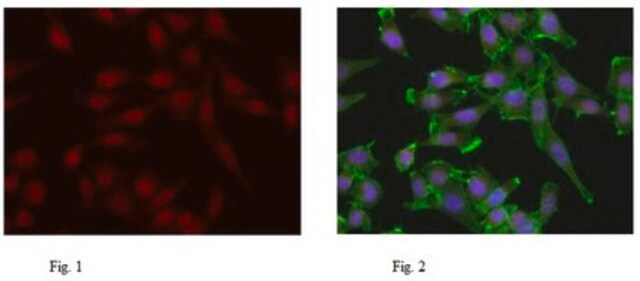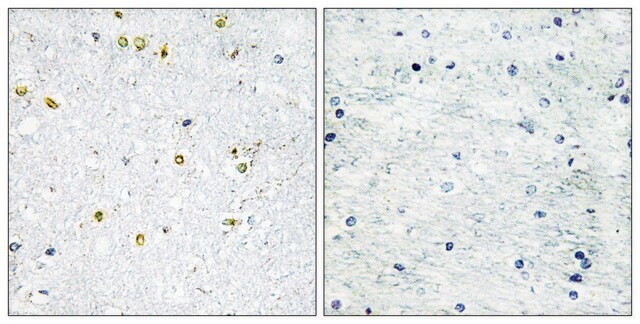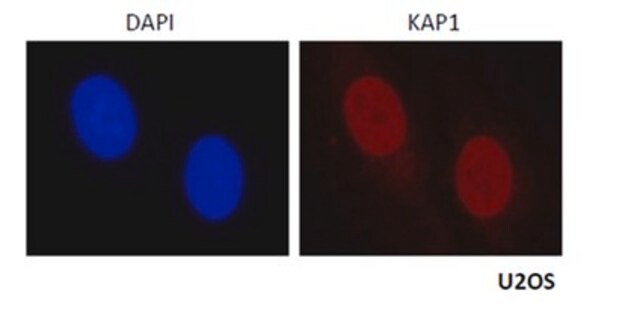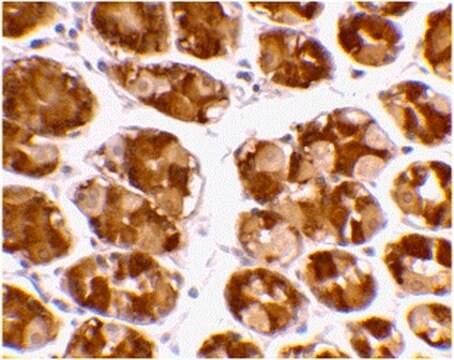382158
Anti-Histone H3, Acetylated (1-20) Rabbit pAb
liquid, Calbiochem®
Selecione um tamanho
₹26,450.45
Selecione um tamanho
About This Item
₹26,450.45
Produtos recomendados
fonte biológica
rabbit
Nível de qualidade
forma do anticorpo
purified antibody
tipo de produto de anticorpo
primary antibodies
clone
polyclonal
Formulário
liquid
contém
≤0.1% sodium azide as preservative
reatividade de espécies
Tetrahymena sp., human
fabricante/nome comercial
Calbiochem®
condição de armazenamento
OK to freeze
avoid repeated freeze/thaw cycles
1 of 4
Este Item | SAB4503475 | ABE1859 | ABF206 |
|---|---|---|---|
| antibody form affinity isolated antibody | antibody form affinity isolated antibody | antibody form serum | antibody form affinity isolated antibody |
| Quality Level 100 | Quality Level 100 | Quality Level 100 | Quality Level 100 |
| shipped in wet ice | shipped in wet ice | shipped in dry ice | shipped in wet ice |
| species reactivity mouse, human | species reactivity mouse, human | species reactivity mouse, human | species reactivity human |
| clone polyclonal | clone polyclonal | clone polyclonal | clone polyclonal |
Descrição geral
Imunogênio
Aplicação
Immunocytochemistry (5 µg/ml)
Immunoprecipitation (see comments)
Embalagem
Advertência
forma física
Reconstituição
Nota de análise
HeLa cells
Outras notas
Braunstein, M., et al. 1993. Genes Devel.7, 592.
Perry, C.A., et al. 1993. Biochemistry32, 13605.
Lin, R., et al. 1989. J. Cell. Biol.108, 1577.
Informações legais
Não está encontrando o produto certo?
Experimente o nosso Ferramenta de seleção de produtos.
Código de classe de armazenamento
10 - Combustible liquids
Classe de risco de água (WGK)
WGK 1
Ponto de fulgor (°F)
Not applicable
Ponto de fulgor (°C)
Not applicable
Certificados de análise (COA)
Busque Certificados de análise (COA) digitando o Número do Lote do produto. Os números de lote e remessa podem ser encontrados no rótulo de um produto após a palavra “Lot” ou “Batch”.
Já possui este produto?
Encontre a documentação dos produtos que você adquiriu recentemente na biblioteca de documentos.
Nossa equipe de cientistas tem experiência em todas as áreas de pesquisa, incluindo Life Sciences, ciência de materiais, síntese química, cromatografia, química analítica e muitas outras.
Entre em contato com a assistência técnica












